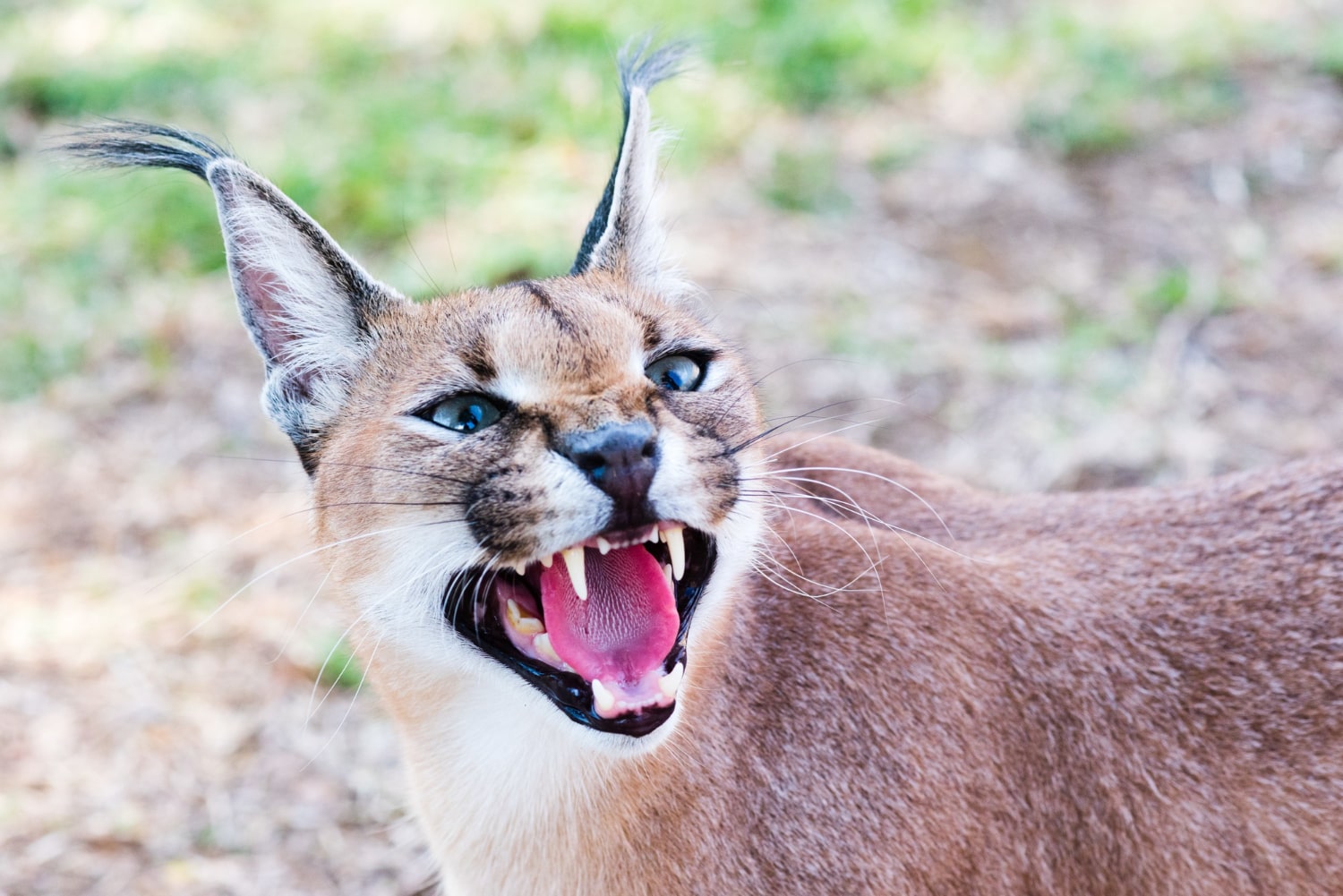Caracals are wild cats with a remarkable combination of elegance and strength, distinguished by both their appearance and behaviour. Their long black ear tufts and alert gaze make them easily recognisable among other felines. They inhabit various regions – from African savannas to mountainous areas of Asia – and can adapt to different environments. These animals hide many secrets, and their fascinating hunting skills and history of interaction with humans may surprise you. You might not know many incredible facts related to this predator.
- The caracal belongs to the genus Caracal and is closely related to the serval and the African golden cat. Its scientific name Caracal caracal comes from Turkish words meaning black ear. This refers to the dark colouring on the back of its ears.
- The most distinctive feature of the caracal is its long ears with black tufts that can reach 4–5 centimetres in length. Scientists believe these tufts help with camouflage in grass and also serve as a form of communication between individuals. Additionally, these ears are highly sensitive to sounds.
- The caracal has a slender, muscular body measuring 60–90 centimetres in length, with a tail reaching up to 30 centimetres. It usually weighs between 8 and 20 kilograms. Males are larger and stronger than females.
- It can jump up to three metres high. This ability allows it to catch birds in mid-flight or reach prey located high above. It hunts by combining speed, strength and precision.
- Over short distances, the caracal can reach speeds of up to 50 kilometres per hour. This makes it easy for the animal to catch hares, birds or small antelopes. During an attack, it often accelerates and then suddenly leaps toward its prey.
- Although it is mainly nocturnal, in some regions it also hunts during the day. Such flexible behaviour helps it survive in various climatic conditions. Its activity depends on the season and the availability of food.
- The caracal is well adapted to living in dry areas and can go without drinking water for a long time. It obtains necessary fluids from the animals it catches. This trait enables it to live in desert and semi-desert regions.
- In ancient times, caracals were tamed in Persia and India for hunting purposes. They were trained to catch birds and small mammals. This method was similar to falconry, but instead of a bird, a cat was used.
- Caracals are territorial and mark their range with scent and by scratching trees. A male’s territory can cover up to 300 square kilometres. Territories of adult individuals of the same sex rarely overlap.
- In the wild, caracals live alone, coming together only during the mating season. This period is short. Care for the young is provided solely by the female.
- The caracal’s pregnancy lasts about 70–80 days, after which 1 to 6 kittens are born. The newborns have closed eyes and begin to explore their surroundings actively only after three weeks. They reach sexual maturity at the age of 12–16 months.
- The caracal’s fur is dense and golden-brown, which helps it camouflage among dry grass and soil. This appearance is particularly useful during hunting. Young caracals often have spotted fur, but the spots disappear as they mature.
- Despite their wild nature, caracals are sometimes kept as exotic pets. However, they require special conditions and a large space. Their temperament and instincts make them unsuitable for living in a typical household.
- Caracals can produce many different sounds, including meowing, growling, hissing and distinctive clicks. Vocal communication plays an important role in interactions with young and during mating.
- In the wild, the caracal’s main enemies are leopards, hyenas and large birds of prey. Humans also pose a threat by destroying their habitats and hunting them illegally. In some regions, the population of this species is declining.
Caracals are animals that combine beauty with predatory strength in an extraordinary way. Their adaptability and hunting skills can amaze even experienced researchers. Protecting these cats is an important part of preserving the ecosystems they inhabit. Learning about them helps us appreciate and protect the biodiversity of our planet.





